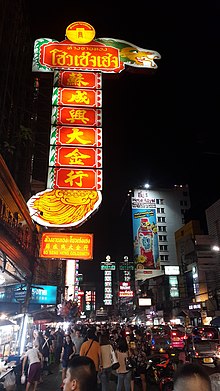Color preferences

In the psychology of color, color preferences are the tendency for an individual or a group to prefer some colors over others, such as having a favorite color or a traditional color.
Introduction[edit]
An 'ecological valence theory' (EVT) has been suggested to explain why people have preferences for different colors. This is the idea that the preference for color is determined by the average affective response to everything the individual associates with the color. Hence, positive emotional experiences with a particular color are likely to increase the propensity to develop a preference for that color and vice versa. Social and cultural factors also factor into this affective response. A study in 2011 on the effects of "school spirit" and color preferences found members of Berkeley were more likely to favor the school's official colors than rival university Stanford. This degree of preference was also correlated with their self-reported level of "school spirit". The researchers conducting the study concluded that this was evidence for the EVT.[1]
Children[edit]
Infants as young as 12 weeks old exhibit color preferences.[2] Generally, children prefer the colors red/pink and blue, and cool colors are preferred over warm colors. Color perception of children 3–5 years of age is an indicator of their developmental stage. Color preferences tend to change as people age.[3]
In different societies[edit]
Favoritism of colors varies widely. Often societal influences will have a direct impact on what colors are favored and disdained. In the West, the color black symbolizes mourning and sadness, red symbolizes anger and violence, white symbolizes purity and peace, and yellow symbolizes joy and luck (other colors lack a consistent meaning). From a recent study, it was discussed that associative learning is the process where an individual develops color preferences. In different countries, color preference vary. In China, red indicates luck, while in Nigeria and Germany it means the exact opposite.[4]
See also[edit]
References[edit]
- ^ Schloss, Karen B.; Poggesi, Rosa M.; Palmer, Stephen E. (5 March 2011). "Effects of university affiliation and "school spirit" on color preferences: Berkeley versus Stanford". Psychonomic Bulletin & Review. 18 (3): 498–504. doi:10.3758/s13423-011-0073-1. PMC 3098359. PMID 21380587.
- ^ Zemach, Iris K.; Teller, Davida Y. (May 2007). "Infant color vision: Infants' spontaneous color preferences are well behaved". Vision Research. 47 (10): 1362–1367. doi:10.1016/j.visres.2007.02.002. ISSN 0042-6989. PMID 17397896.
- ^ Read, M., & Upington, D. (2009). Young Children's Color Preferences in the Interior Environment. Early Childhood Education Journal, 36(6), 491-496. doi:10.1007/s10643-009-0311-6
- ^ Sable, Paul; Akcay, Okan (February 2010). "Color: Cross Cultural Marketing Perspectives As To What Governs Our Response To It". American Society of Business and Behavioral Sciences. 17 (1): 950–954.
Further reading[edit]
- Crozier, W. Ray (1999), "The meanings of colour: preferences among hues", Pigment & Resin Technology, 28 (1): 6–14, doi:10.1108/03699429910252315
- Ellis, Lee; Ficek, Christopher (December 2001), "Color preferences according to gender and sexual orientation", Personality and Individual Differences, 31 (8): 1375–1379, doi:10.1016/S0191-8869(00)00231-2
- Grossman, Randi; Wisenblit, Joseph Z. Priluck (1999), "What we know about consumers' color choices", Journal of Marketing Practice: Applied Marketing Science, 5 (3): 78–88, doi:10.1108/EUM0000000004565
- Madden, Thomas J.; Hewett, Kelly; Roth, Martin S. (2000), "Managing Images in Different Cultures: A Cross-National Study of Color Meanings and Preferences", Journal of International Marketing, 8 (4): 90–107, doi:10.1509/jimk.8.4.90.19795, S2CID 155065770
- Morse, Janice M. (March 2008), ""What's your favorite color?" Reporting irrelevant demographics in qualitative research", Qualitative Health Research, 18 (3): 299–300, doi:10.1177/1049732307310995, PMID 18235153, S2CID 42214073
- Saito, Miho (February 1996), "Comparative studies on color preference in Japan and other Asian regions, with special emphasis on the preference for white", Color Research & Application, 21 (1): 35–49, doi:10.1002/(SICI)1520-6378(199602)21:1<35::AID-COL4>3.0.CO;2-6
- Teller, Davida; Civan, Andrea; Bronson-Castain, Kevin (2004), "Infants' spontaneous color preferences are not due to adult-like brightness variations", Visual Neuroscience, 21 (3): 397–401, doi:10.1017/S0952523804213360, PMID 15518220, S2CID 37398241
- Zemach, Iris; Chang, Susan; Teller, Davida Y. (May 2007), "Infant color vision: Prediction of infants' spontaneous color preferences", Vision Research, 47 (10): 1368–1381, doi:10.1016/j.visres.2006.09.024, PMID 17118421
External links[edit]
- "The Survey Results". awp.diaart.org.

